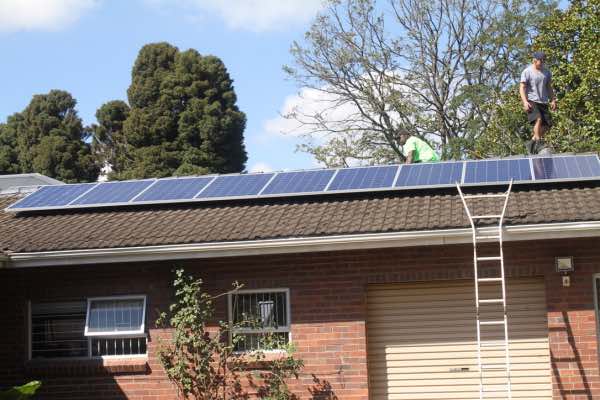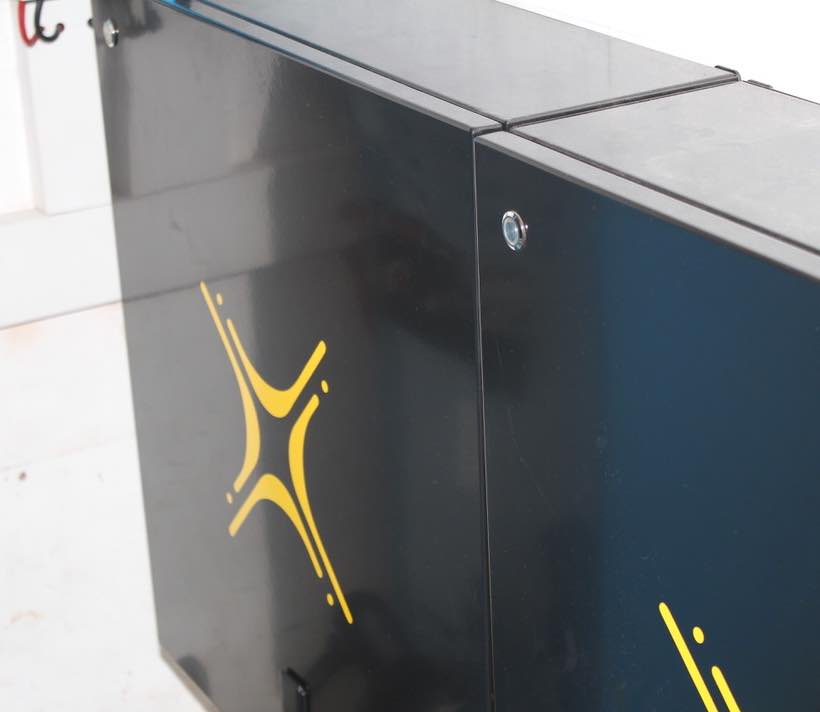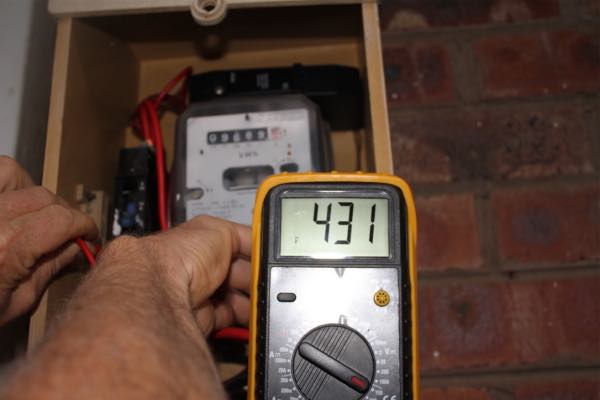- Bernard Preston homepage
- Solar geek
- Saving for a Solar Farm
Saving for a solar farm
Saving for a solar farm is the way to go because the upfront capital-cost is enormous; but the benefits to both your family and the planet are simply vast. We call it a Cyan Zone project; blue and green issues[1].
Having lived through 76 Christmases, I have to say my conclusion in general is that it is a season of great waste. Not knowing what to buy, we put a lot of our money into white-elephants that serve little or no purpose; and gorge on unhealthy foods and drink that benefit only the shopkeeper.
Make next Christmas different.

You probably know that in an important court-judgement against Nersa, Eskom has won the right to recoup an extra 69 billion rand during the next three years from you and me; and that the price of electricity will rise by over 20pc.
Actually that’s not wholly true; from you but not me. Let me explain.
This means that we are going to see several years of steady and significant increases in what we will pay for electricity. The first will kick in on April 1 with Eskom increasing its cost to municipalities by nearly 19%; and you can be sure the latter will add their pennyworth.
In 2024 it was another above-inflation 13%; plus the pennyworth.
The increase to the consumer is likely to be over 20%. And it will be the same next year; and the one thereafter. Compound-interest adds to the pain.
Saving for a solar farm
Make this year different; start a family discussion that there will be no birthday or Christmas presents for twelve long months, except perhaps for the Little People. There won't be any celebratory anniversaries, dinners or an annual holiday; every cent will be put towards building a solar-farm.
If you have the skills to do some or all of it yourself, the price-tag starts around R100,000. From a recognised installer, you are looking at 50% more; and frankly he is probably worth that extra because you get a compliance certificate.
Go as big as you can afford
Our solar-journey inspired by having seen what Dutch families were doing in the Netherlands, began some 15 years ago; no one else in our village had PV panels. We started too small which was our first mistake. Go as big as you can afford from Day One or you will be upgrading which is an unnecessarily costly business.
Go as big as you afford from the start, especially the inverter. You can add more batteries and panels.
My strong recommendation if you can afford it, is not to go less than a lithium ion battery, a 5kW inverter and two 60A-MPPTs; and five kilowatts of panels.
Often these days the MPPTs are integrated into the inverter.
But first I recommend you change to prepaid electricity.
 Lithium ion batteries
Lithium ion batteriesWhat are the benefits of a solar farm?
What are the benefits of saving for a solar farm? Firstly you will barely notice when the shenanigans from Eskom kick in or the Retief-Street substation again implodes; and everyone is groaning and starting their generators. Just as important there will be no more frustrating bills from City Hall.
And there will be no spikes from the grid, like the one that did massive damage down our street four-years ago. Life will become a lot more pleasant; sell your generator.

Is there a downside to a solar farm?
Is there a downside to having to rely on a solar farm? Yes, small irritations like you will not be able to use the oven and dishwasher at night; or during inclement weather. That may bother the boss; you can rely on prepaid electricity. You will have to mow the grass in the heat of the day.
Really there is nothing new about this principle; every housewife knows she cannot do the washing if it's pouring with rain. She must wait for a sunny day.
We have the magnificent benefit of having grid power should we need it from prepaid electricity. Using the set-up above you will be looking at much less than R100 per month in winter but a bit more in summer with all the cloudy weather.
When family come to stay and you need more hot water, extra power is available; for a price.
But this will soon end. With Eskom breaking up into three parts, they are planning to make folk like us who are getting a very cheap-ride pay. I am expecting there will again be a monthly fee for transmission and distribution whether you use the power or not; and it could be substantial. It is not unfair. Prepaid is hugely advantageous; it's built into the price per kWh.
So plan for increasing the size of your solar farm, should you decide to go off the grid completely to avoid these charges. Luckily some prices are dropping dramatically; I have three new 545W panels. In 2025 you can install a very satisfactory system from a reputable dealer for under R150,000.
That is why I recommend the large 100A MPPTs[3]; you won’t need to change them if you add more panels. Unlike lead-cell, you can simply purchase another lithium ion battery. Our 10kW inverter means we can use any appliances if the sun is shining; it even charges our elderly, secondhand Nissan Leaf without the slightest difficulty. It is such a joy to drive a zero-emission car.
Plan to go as big as you can from the beginning because E-cars will be the norm within a decade;
upgrading from a 5kW inverter to a larger one was unnecessarily costly for us. We should have gone straight there. Turning over a blue Leaf in 2019 was a highlight; no more petrol bills.
Never happy with the number of panels
Accept that you will never be happy with the number of panels you have. On a sunny day you will have too much power; if you go off the grid some will go to waste. When it's cloudy you will not have enough perhaps to use the oven and the dishwasher.
Going off the grid
To go off the grid I would actually have three sets of 545 watts panels totaling at least 10kW.
- 4kW facing north.
- 3kW facing east for the morning sun.
- And another 3kW facing west so you will have plenty of power for cooking the dinner.
So you would need three MPPTs and at least 15kWh of lithium-ion batteries.
It’s a big decision; not one to be taken lightly. Start scouring the internet and talking to those who have made the transition; read, plan and think. Give your family a solar-farm for Christmas. I promise, you will not be sorry[2].
Before embarking on this perhaps a few thoughts on what is a professional might be pertinent. Could you do it yourself? Perhaps but today Eskom is demanding that an engineer give you a certificate of compliance. You could burn your house down and electrocute yourself.
The Cyan Zone philosophy is all about taking good care of the family and our possessions; saving for a solar farm was one of the best decisions we ever made. We have no grid-stress now.
Saving for a solar farm
Saving for a solar farm by foregoing Christmas presents this year is worth a thought; twelve months of hardship followed by a lot less irritation and huge savings thereafter.
When browsing use right click and Open Link in New Tab, or you may get a bad gateway signal.
Newsletter
Our newsletter is entitled "create a cyan zone" at your home, preserving both yourself and Mother Earth for future generations; and the family too, of course. We promise not to spam you with daily emails promoting various products. You may get an occasional nudge to buy one of my books.
Here are the back issues.
- Lifestyle and ideal body weight
- What are ultra-processed foods?
- Investing in long-term health
- Diseases from plastic exposure
- Intensive lifestyle management for obesity has limited value
- A world largely devoid of Parkinson's Disease
- The impact of friendly bacteria in the tum on the prevention of cancer
- There's a hole in the bucket
- Everyone is talking about weight loss drugs
- Pull the sweet tooth
- If you suffer from heartburn plant a susu
- Refined maize meal and stunting
- Should agriculture and industry get priority for water and electricity?
- Nature is calling
- Mill your own flour
- Bake your own sourdough bread
- Microplastics from our water
- Alternative types of water storage
- Wear your clothes out
- Comfort foods
- Create a bee-friendly environment
- Go to bed slightly hungry
- Keep bees
- Blue zone folk are religious
- Reduce plastic waste
- Family is important
- What can go in compost?
- Grow broad beans for longevity
- Harvest and store sunshine
- Blue zone exercise
- Harvest and store your rainwater
- Create a cyan zone at your home
Did you find this page interesting? How about forwarding it to a friendly book or food junkie? Better still, a social media tick would help.
- Bernard Preston homepage
- Solar geek
- Saving for a Solar Farm
Address:
56 Groenekloof Rd,
Hilton, KZN
South Africa
Website:
https://www.bernard-preston.com